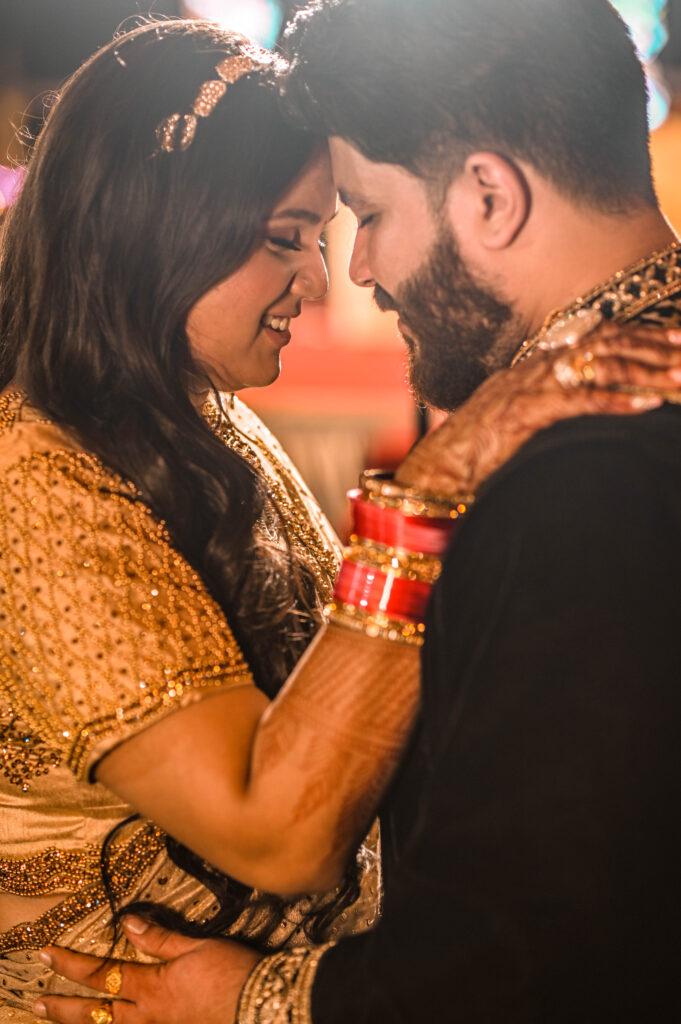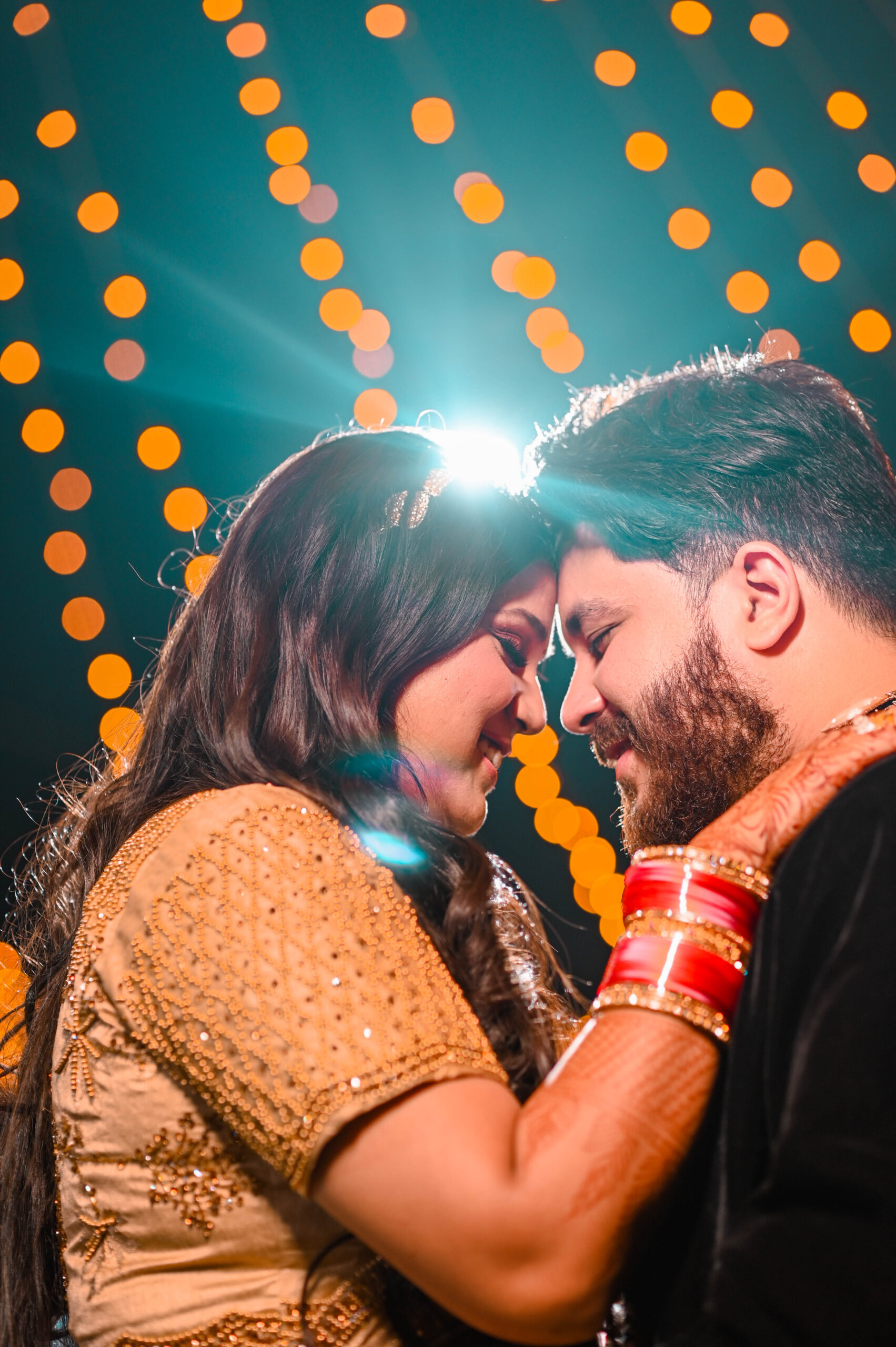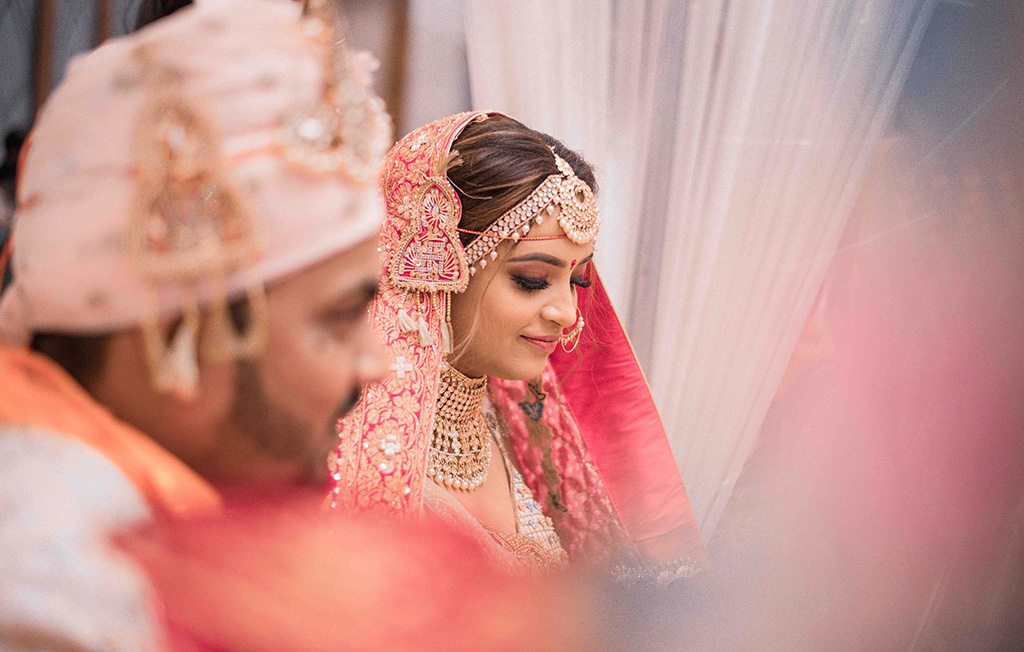wedding photography is an art and a profession that holds immense significance. It involves documenting one of the most important events in a person’s life—their wedding day. The role of a wedding photography extends far beyond simply capturing beautiful moments. It is about telling a couple’s love story through images, preserving precious memories, and creating a visual record of emotions, laughter, and tears that will last a lifetime.
In this comprehensive guide, we will delve into every aspect of wedding photography, from its history and evolution to technical tips and artistic considerations, helping you understand why it is so integral to the wedding experience.
1. The Role of a Wedding Photographer
A wedding photography primary responsibility is to document the key moments of a wedding day. This includes the preparation of the bride and groom, the ceremony, the reception, and other significant events. However, this description only scratches the surface. A wedding photographer’s job is also to capture the atmosphere, emotions, and relationships between the couple and their loved ones.
wedding photography involves more than just pressing a button on a camera. It requires creativity, technical skill, knowledge of lighting and composition, and the ability to anticipate moments. Photographers must be discreet, patient, and always ready to capture the perfect shot. A successful wedding photography creates an album of images that tell a story, evoke emotion, and transport the couple back to their special day.

2. The Evolution of wedding photography
wedding photography has evolved dramatically over the years, both in terms of style and technology. In the early days of photography, weddings were primarily captured using black-and-white film. The photographs were formal and posed, and there was little room for creative expression. The process was also cumbersome, requiring photographers to use large cameras and heavy equipment.
With the advent of color photography in the mid-20th century, wedding albums became more vibrant and emotionally expressive. The introduction of smaller, more portable cameras in the 1980s made it easier for photographers to capture candid moments. The shift from film to digital photography in the 2000s revolutionized wedding photography. Digital cameras allowed for greater flexibility, with instant feedback and the ability to shoot in different lighting conditions without worrying about film development costs.
3. Types of wedding photography Styles
wedding photography encompasses various styles, each with its unique approach and aesthetic. Understanding these styles can help couples choose the right photographer for their wedding.
3.1. Traditional/Classic wedding photography
This style is characterized by posed, formal shots of the couple and their families. The photographer directs the subjects to ensure they look their best. The traditional style focuses on capturing the key moments, such as the exchange of vows, the first kiss, and the first dance.
3.2. Photojournalistic wedding photography
Photojournalistic wedding photography, or documentary-style photography, focuses on capturing moments as they unfold. The photographer takes a more hands-off approach, observing the event and capturing candid, unscripted moments. This style aims to tell the story of the wedding day without staging or interfering with the natural flow of events.
3.3. Fine Art wedding photography
Fine art wedding photography is about creating beautiful, artistic images that emphasize composition, lighting, and mood. Photographers who specialize in this style often use a combination of natural and artificial light, unique angles, and artistic post-processing to create a visually striking set of images.
3.4. Contemporary wedding photography
Contemporary wedding photography blends elements of traditional, photojournalistic, and fine art styles. Photographers who practice this style tend to be more experimental with lighting and composition, often incorporating bold colors, unique perspectives, and modern editing techniques.
3.5. Vintage wedding photography
Vintage wedding photography is inspired by the past, often using sepia tones, soft lighting, and old-fashioned techniques. The goal is to create images that evoke a sense of nostalgia and timelessness. This style can be achieved through both digital manipulation and the use of vintage cameras or lenses.
4. Planning a wedding photography Session
Effective wedding photography doesn’t happen by chance. It requires careful planning and coordination. A photographer needs to meet with the couple before the wedding to discuss their expectations, preferences, and specific moments they want to capture.
4.1. Pre-Wedding Consultation
A pre-wedding consultation allows the wedding photography to understand the couple’s personalities, style, and vision for their wedding. This is an opportunity to discuss the timeline of the day, locations, the list of important family members to photograph, and any special requests.
4.2. Shot List
Having a shot list is a helpful way to ensure that the wedding photography doesn’t miss any key moments. This includes traditional family portraits, candid shots of guests, the couple’s first look, and other milestones. A good photographer will also have a mental checklist of the types of images they need to capture.
4.3. Timeline Coordination
wedding photography work closely with the wedding planner to ensure the photography schedule aligns with the day’s events. The timeline will dictate when the photographer takes getting-ready shots, ceremony photos, group portraits, and reception images. Efficient time management is essential to avoid missing important moments or being rushed.
5. Essential Equipment for wedding photography
wedding photography use a wide range of equipment to ensure they can capture every detail of the event. The most essential gear includes:
5.1. Cameras
Professional wedding photography typically carry at least two camera bodies. This ensures they have a backup in case one camera fails and allows them to switch lenses quickly without having to change cameras mid-shot.
5.2. Lenses
Lenses are crucial to wedding photography, as they determine the style and quality of the images. Commonly used lenses for wedding photography include:
- 50mm f/1.8 for portraits and low light.
- 24-70mm f/2.8 for versatile, high-quality shots.
- 70-200mm f/2.8 for capturing candid moments from a distance.
- Wide-angle lenses for dramatic group shots and venue shots.
5.3. Lighting Equipment
wedding photography often use external flashes, light modifiers, and reflectors to enhance their shots, especially in low-light conditions such as evening receptions or indoor ceremonies.
5.4. Backup Gear
Having backup gear is essential for ensuring that everything runs smoothly during the wedding day. Backup cameras, lenses, flashes, memory cards, and batteries help avoid disruptions due to technical issues.
6. Techniques for Capturing the Best Wedding Photos
wedding photography requires a variety of techniques to achieve the best results. Here are some of the key aspects:
6.1. Lighting
Lighting is one of the most critical factors in photography. A skilled wedding photographer understands how to use both natural and artificial light to create the perfect ambiance. Natural light, especially during the golden hour (the hour before sunset), provides soft, flattering light, while artificial light sources like flash can be used creatively to fill in shadows.
6.2. Composition
Good composition helps to create visually pleasing and impactful images. Techniques like the rule of thirds, leading lines, and framing can make photos more dynamic and aesthetically appealing. A strong sense of composition also helps photographers capture moments in a way that tells a story.
6.3. Candid vs. Posed Shots
A balance of candid and posed shots is crucial. Candid images capture real emotions and reactions, while posed images can ensure that key people, such as the bride and groom or their families, look their best. A wedding photographer should know when to step back and let moments unfold naturally and when to guide the couple and their families into a formal pose.
6.4. Editing and Post-Processing
Editing plays a significant role in the final outcome of wedding photographs. Post-processing includes adjusting exposure, contrast, saturation, and color grading. wedding photography often use programs like Adobe Lightroom and Photoshop to enhance their photos, making them look polished and professional. Some photographers also add a unique style, such as light vintage filters or black-and-white edits, to create a signature look.
7. Delivering the Final Product
After the wedding, the photographer’s work is not finished. The final step is delivering the images to the couple in a beautiful and meaningful way.
7.1. The Wedding Album
The wedding album is often the most treasured product from a wedding photography session. It should be carefully curated to highlight the best moments of the day. The album design may include a mix of candid shots, portraits, and detail shots, arranged in a way that tells the story of the day.
7.2. Digital Galleries
Many photographers also provide a digital gallery for the couple to access their images online. This allows the couple to download high-resolution versions of their photos and share them with family and friends.
7.3. Prints and Other Products
In addition to albums, many wedding photography offer prints, canvases, and other keepsakes. These products provide couples with tangible memories of their special day.

8. The Business of wedding photography
For photographers, wedding photography is not only a creative endeavor but also a business. Managing client expectations, setting pricing, marketing services, and maintaining a workflow are all essential components of running a successful wedding photography business.
8.1. Pricing and Packages
wedding photography offer different pricing packages depending on their experience, the number of hours they’ll work, and the products they deliver. Packages may include engagement sessions, full-day coverage, albums, and digital files. It’s important for photographers to establish clear contracts to set expectations for both parties.
8.2. Marketing and Branding
To attract clients, wedding photography need a strong online presence, often through social media and a professional website. Building a portfolio with high-quality images and testimonials from previous clients is crucial for establishing trust and credibility.
8.3. Building Relationships
A wedding photography success often depends on their ability to build good relationships with clients. Communication, punctuality, and flexibility are key to ensuring a positive experience for the couple and their families.
Positive Aspects of wedding photography
1. Emotional Impact and Storytelling
One of the most significant positives of wedding photography is the emotional satisfaction that comes from capturing genuine moments of joy, love, and celebration. wedding photography are tasked with telling a couple’s unique love story through images. They capture not only the key moments—such as the ceremony and first kiss—but also the candid, emotional moments that reflect the happiness and love shared between the couple and their families. The photos taken on a wedding day serve as emotional keepsakes, reminding the couple of the best day of their lives for years to come.
2. Creative Expression
wedding photography is a blend of creativity and technical skills. Photographers have the opportunity to create stunning, artistic images that reflect their unique style. Whether it’s using light creatively, capturing a perfect candid moment, or composing a breathtaking portrait, wedding photography are free to express their artistry in ways that make each wedding album unique. The diverse settings, varied lighting conditions, and emotional depth of weddings offer photographers endless opportunities to experiment and innovate.
3. Personal Fulfillment
For photographers passionate about capturing memories and emotions, wedding photography can be personally fulfilling. The gratitude of clients and the joy they feel when they see their photos can be incredibly rewarding. Knowing that their work has preserved one of the most important days in someone’s life is a source of pride for many wedding photographers. For those who enjoy the social aspect of the job, interacting with clients and being a part of such a special occasion can also be fulfilling.
4. Financial Rewards
wedding photography can be financially lucrative. Since weddings are significant events, couples are often willing to invest a considerable amount in professional photographers. High-quality wedding photographers can command premium prices, especially if they are established in the industry with a reputation for excellence. This can make wedding photography a highly profitable venture for skilled photographers. Many photographers also offer packages with additional services like engagement shoots, albums, or prints, increasing their earning potential.
5. Diverse Work Environment
wedding photography offers a dynamic and varied work environment. No two weddings are ever exactly the same, and each presents new challenges and experiences. This variety keeps the work interesting and helps photographers develop a diverse portfolio. The different venues, cultural traditions, and personal preferences of each couple ensure that no two weddings are alike, offering photographers constant opportunities to expand their skills and creativity.
6. Networking Opportunities
wedding photography also provides networking opportunities. Photographers often work with wedding planners, florists, venues, and other vendors, which can lead to referrals and future business opportunities. Building strong relationships within the wedding industry can help photographers grow their businesses and connect with potential clients. Moreover, social media platforms and wedding websites are excellent tools for networking and marketing services.
Negative Aspects of wedding photography
1. High Pressure and Stress
wedding photography is known for its high pressure and stress. The responsibility of documenting an entire event and ensuring that no key moment is missed can be overwhelming. Weddings are fast-paced, often involving multiple locations, large groups of people, and various lighting conditions. The photographer is expected to be everywhere at once and get the perfect shot. Mistakes are not an option—missed moments, such as the first kiss or key family portraits, can lead to dissatisfaction from clients. This constant pressure can be mentally and physically exhausting.
2. Long Hours
wedding photography is a time-consuming job that often involves long hours. A typical wedding day lasts anywhere from 8 to 12 hours, with photographers arriving early to capture the bride and groom’s preparations and staying late for the reception and dance. After the event, photographers often spend additional hours editing the photos, which can take days or even weeks depending on the size of the wedding and the number of images taken. This demanding schedule can lead to burnout for photographers who have multiple weddings to shoot each month.
3. Physically Demanding
wedding photography can also be physically taxing. Photographers are often on their feet for extended periods, carrying heavy equipment, moving between locations, and sometimes working in challenging environments. Whether it’s adjusting lighting setups, climbing a ladder to get the perfect shot, or working in difficult weather conditions, the job requires physical stamina and endurance. This physical toll can be taxing, especially during long weddings or if a photographer has multiple back-to-back events.
4. Unpredictable Outcomes
wedding photography are unpredictable events. Despite meticulous planning, unexpected issues can arise. For instance, poor weather, venue restrictions, or uncooperative guests can hinder the photographer’s ability to get the perfect shot. A photographer might not have control over lighting, crowd behavior, or even certain emotional moments. It’s also possible that some key moments don’t go as planned, making the job challenging and requiring a photographer to adapt quickly. The unpredictability of weddings means that photographers must be highly adaptable and creative in their approach.
5. Emotional Toll
wedding photography can sometimes be caught in emotionally charged situations. While their role is to remain professional, they are often exposed to highly emotional and intimate moments, such as the couple’s first look or a parent’s emotional reaction during the ceremony. While these moments are beautiful to capture, they can also take an emotional toll on the photographer, especially if they develop a connection with the couple. Additionally, the stress of ensuring the day goes smoothly and dealing with demanding clients can lead to emotional exhaustion.
6. Client Expectations and Pressure to Deliver
wedding photography often face high client expectations, which can be difficult to manage. Couples have spent months or even years planning their weddings, and they expect the photographs to capture the essence of their day perfectly. This can put pressure on the photographer to deliver flawless work. Managing client expectations, handling last-minute changes, and addressing complaints can be challenging. Additionally, some clients may demand more edits or request specific photos after the event, leading to additional work and potentially frustrating interactions.
7. Competition and Market Saturation
wedding photography is a highly competitive field. With the rise of affordable digital cameras and the popularity of social media, many aspiring photographers enter the market, which can make it difficult to stand out. It can take years of building a strong reputation and portfolio to attract a steady stream of clients. Additionally, price sensitivity is an issue for some couples, leading to photographers having to lower their rates to stay competitive. The high saturation in the market can make it challenging to maintain a profitable business, especially for newer photographers.

Conclusion
wedding photography is a rewarding yet demanding profession. The positive aspects—emotional fulfillment, creative expression, financial rewards, and networking opportunities—make it a compelling career choice for many. Capturing a couple’s most significant day and preserving memories that last a lifetime is an immensely satisfying experience.
However, the negative aspects, such as high pressure, long hours, physical demands, and the unpredictability of weddings, can be challenging. The emotional toll and the constant competition in the industry further add to the complexities of this profession.
Ultimately, the choice to pursue wedding photography depends on a photographer’s passion for the craft, ability to handle stress, and desire to work in a dynamic and ever-changing environment. For those who embrace the challenges and find joy in the art of storytelling through photography, wedding photography offers a deeply fulfilling and lucrative career.
wedding photography is an integral part of the wedding industry, combining technical skill, artistry, and an understanding of human emotions. It is a powerful tool for preserving memories, telling stories, and creating heirlooms that last for generations. Whether you are a photographer aiming to improve your craft, a couple planning your wedding, or simply someone interested in the art of photography, understanding the nuances of wedding photography is essential to appreciating its value in our lives.
From the moment the bride and groom prepare for the day, to the final dance, wedding photography are tasked with capturing memories that will stay with the couple forever. It’s not just about taking pictures—it’s about freezing time and emotions in beautiful, timeless images.















